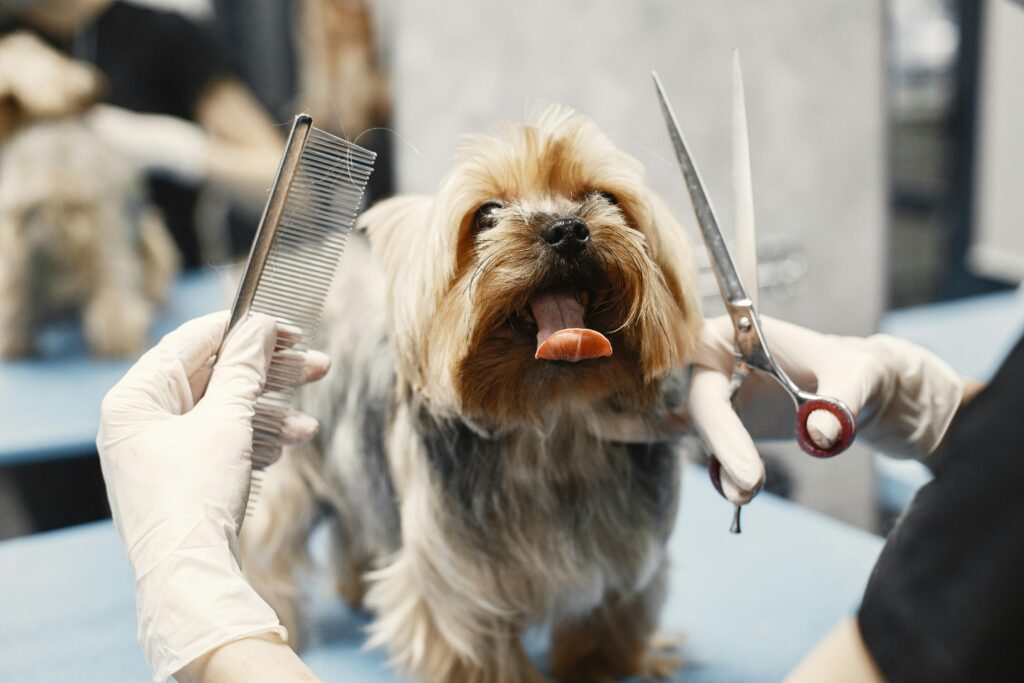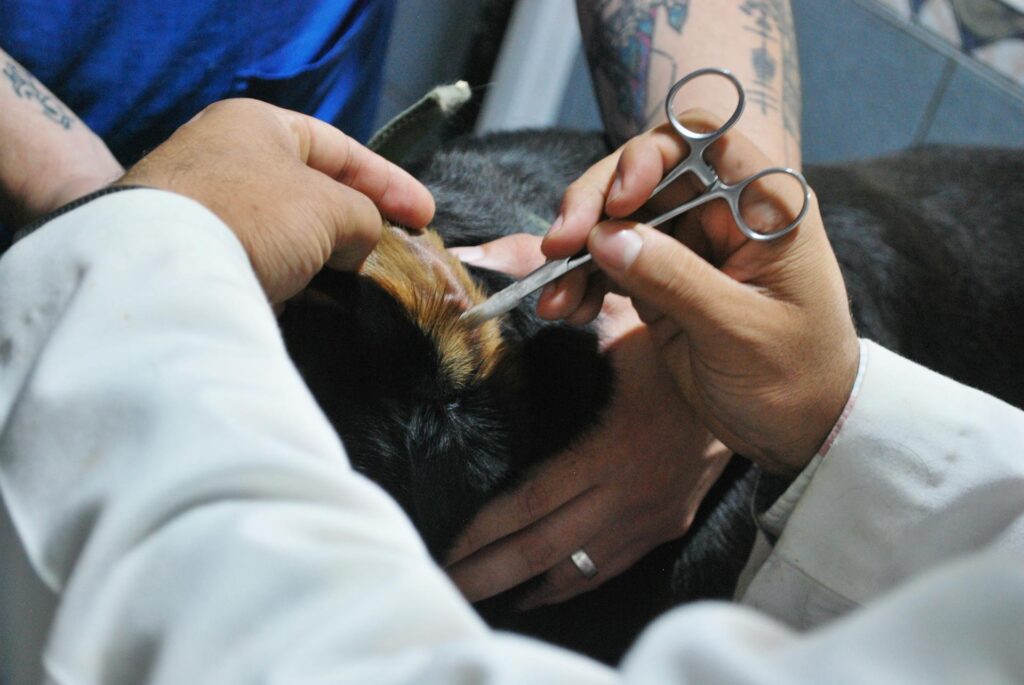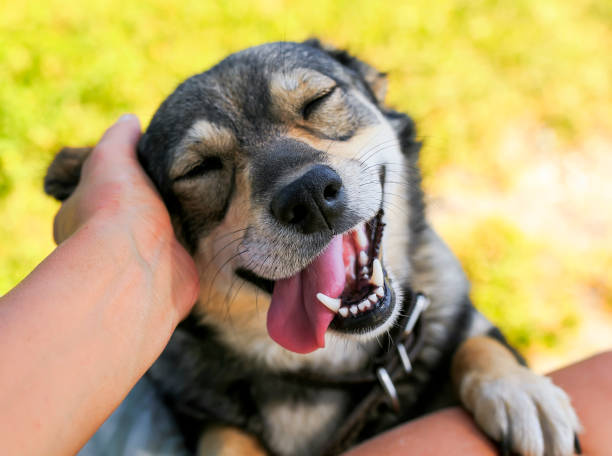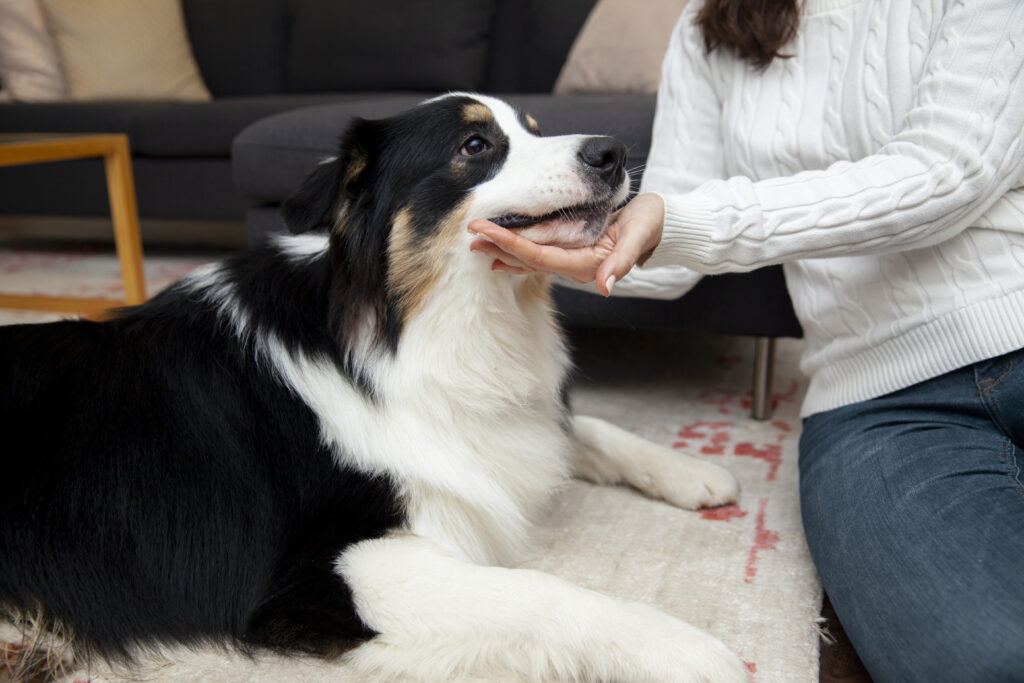
As a dog owner, you may have often observed your furry friend’s unique habit of shaking his head vigorously. You may have observed this behavior specifically after a grooming session. This behavior could baffle you, leading you on a quest to understand the reason behind it. Dogs possess many natural instincts. Head shaking appears to be one of the fascinating behaviors deeply ingrained in their DNA. But the question lingers: Why does my dog shake his head after grooming?
This article is a comprehensive guide discussing: Why do dogs shake their head after grooming? We’ll also explore the strategies to prevent head shaking in dogs after grooming. Let’s start with an insight into what the grooming process is.
Understanding the Grooming Process for Dogs
The grooming process for dogs typically involves several activities like:
- Bathing – helps to remove dirt and odors
- Brushing – detangles fur and distributes natural oils
- Hair trimming – keeps their coat manageable
- Nail clipping – keeps nails at a comfortable length
- Ear cleaning – essential to prevent infections

These steps are crucial for maintaining your dog’s hygiene and overall health. While grooming your dog, you must do each step carefully to avoid discomfort for your furry friend.
During this grooming process, your dog can experience a range of sensations. These sensations may include the feeling of water, the sound of clippers, and the sensation of brushes. Your dog usually finds all these sensations foreign to him. Some dogs may find certain aspects of the grooming process pleasant, while others may feel anxious or irritated.
07 Common Reasons: Why Do Dogs Shake Their Head After Grooming
There could be multiple reasons your dog shakes his head after a grooming session. Some of the common reasons include:
Unusual Physical Sensation
It is one of the most common reasons for head shaking in grooming dogs. It happens in dogs to relieve themselves from the physical sensation caused by the grooming tools and products. For example, water can enter their ears during a bath or play, and shaking their head is an instinctual response to relieve the discomfort. Some other sensations causing the dogs to shake their heads include the sensation of clippers buzzing and static electricity from the brushing.

Communicative Sign
As dogs communicate through body language, head shaking might be a way of expressing their feelings about the grooming process. Grooming can also make a dog feel unusual. When the weight or texture of your dog’s coat changes after a haircut or bathing, he may shake his head to regain a sense of normalcy. Whether it’s relief, discomfort, or even happiness, your pet uses physical actions like head shaking to convey what he’s experiencing internally.
Ear Irritation or Infection
It is one of the most common reasons a dog shakes his head after grooming. The symptoms of an ear infection include redness, discharge, odor, and obvious discomfort. Multiple reasons can cause ear irritation or infection. Grooming sessions, especially those involving ear cleaning, can sometimes aggravate pre-existing issues or introduce bacteria into the ear canal.

Another primary reason for ear irritation or infection is ear mites. These are tiny parasites that can infest a dog’s ear canal and cause intense itching and irritation. Grooming activities may disturb the ear mites, triggering increased head shaking as your dog tries to alleviate the discomfort these ear mites initiate.
Allergies
Allergies can cause dogs to shake their head after grooming. Some dogs may be allergic to grooming products such as shampoos, conditioners, or ear cleaners. Allergic reactions can manifest as itching, redness, or discomfort, prompting your dog to shake their head to alleviate the irritation. These allergies can also be environmental or food-related or due to parasites like ear mites, which are more common in puppies.
Foreign Objects
Foreign bodies or debris lodged in a dog’s ears can also cause head shaking. These foreign objects are a common cause in outdoor dogs, as they may get grass, seeds, small insects, or dirt trapped in their ears during play.
Also Read: 10 Eco-Friendly Pet Products to Keep Your Furry Friend Happy and the Planet Healthy
Medical Conditions
Certain medical conditions, such as hormonal imbalances or autoimmune diseases, may manifest symptoms, including head shaking.
Residual Water or Products
While your groomer uses water or grooming products near your dog’s ears, residual moisture or chemicals may irritate, leading to head shaking. It’s essential to ensure that ears are thoroughly dried after grooming to prevent head shaking.
Being a responsible pet owner, it’s always important to be aware of these potential causes of head shaking in your dog. Observing any additional symptoms accompanying the head shaking can help identify the underlying issue and ensure that my dog receives the appropriate care and time.
How to Prevent Head Shaking in Dogs After Grooming?
There are several effective strategies you may learn to prevent your dog from shaking his head after grooming. Some of the key strategies include:
Make Grooming Comfortable – The first step is to make your dog’s grooming experience as comfortable as possible. First, choose the right groomer for your dog and use high-quality, gentle products. Ensure that all tools used are clean and in good condition. Look for groomers who prioritize your dog’s comfort and use gentle techniques during grooming sessions. Before each grooming session, communicate any specific concerns or preferences regarding your dog’s grooming routine.
Also Read: A Step-by-Step Guide to Prevent Counter Surfing in Dogs
Choose Dog-Friendly Grooming Products – Opt for grooming products specifically formulated for dogs and free from harsh chemicals or fragrances. These products may irritate your dog’s ears. Choose gentle shampoos, conditioners, and ear cleaners suitable for your dog’s skin and coat type.
Keep Ears Dry – After bathing or swimming, ensure your dog’s ears are thoroughly dried. It helps prevent moisture from accumulating in the ear canal. Use a clean, dry cloth to gently wipe away any excess water, paying particular attention to the ear folds and crevices.
Regular Ear Maintenance – Incorporate regular ear maintenance into your dog’s grooming routine. It helps prevent the buildup of wax, dirt, or debris that can lead to ear infections or irritation. Always use a veterinarian-recommended ear cleaner to remove any excess buildup and promote ear health gently.
Avoid Over-Cleaning – While it’s essential to keep your dog’s ears clean, avoid over-cleaning, as this can disrupt the natural balance of the ear canal and lead to irritation.
Monitor for Signs of Discomfort – Watch for discomfort or irritation in your dog’s ears. These may include excessive head shaking, scratching, redness, or odor. If you notice any abnormalities, consult your veterinarian for a thorough examination and appropriate treatment.
Regular Veterinary Check Ups – Schedule regular checkups with your veterinarian to ensure your dog’s ears are healthy and free from any underlying issues. Your veterinarian can guide ear care and recommend preventative measures to keep your dog’s ears in optimal condition.
Final Thoughts
Understanding why a dog shakes its head after grooming allows you to better care for your canine companion. You can ensure the grooming is a positive experience for your dog by recognizing the common reasons for this behavior, being aware of potential health issues, and implementing preventative measures. It’s a journey of learning and adapting, but the reward is a happy, healthy, and well-groomed pet. For fellow dog owners seeking to improve their grooming routine, remember that patience, attention to detail, and a loving approach can make all the difference. Happy grooming and happy pups!
FAQs: Why Do Dogs Shake Their Heads After Grooming?
Q.1. What prompts a dog to shake its head after grooming?
The head-shaking behavior in dogs post-grooming is primarily a reflexive response is aimed at restoring comfort and equilibrium. During grooming, the introduction of water, grooming products, or the removal of accumulated debris can create a sensation of imbalance or irritation within the ear canal, prompting the dog to shake its head to alleviate discomfort and remove any residual water or foreign particles. This behavior is rooted in the dog’s instinctual need to maintain sensory homeostasis, particularly within the auditory and vestibular systems, essential for balance and spatial orientation.
Q.2. Are certain breeds more prone to head shaking after grooming than others?
Yes, breed-specific anatomical differences significantly influence the propensity for post-grooming head shaking. Breeds with long, floppy ears, such as Basset Hounds and Cocker Spaniels, are more inclined to retain moisture and debris due to reduced air circulation within the ear canal. This anatomical predisposition heightens their need to shake their heads vigorously after grooming to prevent discomfort and potential ear infections.
Q.3. How does the physical structure of a dog’s ear influence this behavior?
The anatomical structure of a dog’s ear, characterized by a deep, L-shaped ear canal, predisposes them to greater accumulation of moisture and debris compared to humans. While advantageous for acute hearing, this design makes dogs more susceptible to irritation and infections when introducing foreign substances. Consequently, the instinctual head shake is a protective mechanism designed to expel unwanted material, thereby mitigating the risk of inflammation or infection.
Q.4. Could head shaking after grooming indicate an underlying health issue?
While occasional head shaking is a normal behavior post-grooming, excessive or persistent head shaking may signal an underlying health concern, such as otitis externa (inflammation of the external ear canal), foreign bodies within the ear, or allergic reactions to grooming products. Pet owners must monitor the frequency and intensity of this behavior and consult a veterinarian if the head shaking persists or is accompanied by other symptoms like scratching, redness, or discharge.
Q.5. How can groomers minimize discomfort for dogs during and after grooming?
Professional groomers can employ several strategies to minimize discomfort, including using tepid water to avoid thermal shock, gentle cleansing products formulated specifically for dogs to reduce chemical irritation, thorough drying of the ears post-wash, and regular checks for and removal of foreign objects or parasites. Educating pet owners on the importance of these practices can also help mitigate the need for dogs to shake their heads excessively after grooming.
Q.6. What are the potential risks associated with frequent head shaking in dogs?
Frequent and vigorous head shaking can lead to various complications, including the rupture of blood vessels within the ear, which can lead to hematoma formation and potential exacerbation of existing ear conditions. This repetitive motion can also cause discomfort and stress to the dog, underscoring the need for prompt veterinary evaluation and treatment of the underlying cause.
Q.7. Can preventive measures be taken to reduce the incidence of head shaking post-grooming?
Yes, preventive measures include maintaining a regular, gentle ear cleaning regimen to remove excess wax and debris, using vet-approved ear drying solutions after bathing or swimming, and selecting hypoallergenic grooming products to lessen the risk of allergic reactions. Additionally, routine veterinary check-ups can help identify and address any ear-related issues before they necessitate excessive head shaking.
Q.8. What role does grooming frequency play in head shaking behavior?
The frequency of grooming can influence head shaking behavior. Overly frequent baths can lead to dryness and ear canal irritation, prompting more frequent shaking. Conversely, infrequent grooming can lead to the accumulation of wax and debris, also resulting in increased head shaking. A balanced grooming schedule tailored to the dog’s breed, lifestyle, and skin condition is essential for minimizing discomfort and head shaking.
Q.9. How does post-grooming head shaking impact the psychological well-being of dogs?
While head shaking is a natural response, excessive or prolonged bouts can lead to anxiety or discomfort in dogs, affecting their psychological well-being. Ensuring a gentle and stress-free grooming experience and immediate attention to any signs of distress can help mitigate any negative psychological impacts.
Q.10. What future research directions are suggested for better understanding head shaking in dogs post-grooming?
Future research could focus on developing more sophisticated grooming products that minimize irritation, investigating breed-specific grooming needs and responses, and exploring the long-term impacts of grooming practices on canine ear health. Additionally, studies on the effectiveness of various preventive and therapeutic interventions for reducing the necessity of head shaking post-grooming would provide valuable insights for both veterinarians and pet owners.

